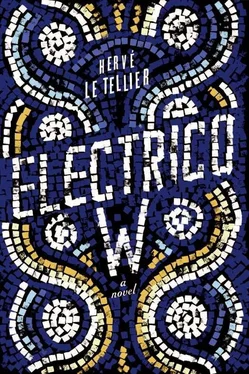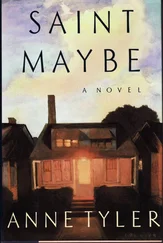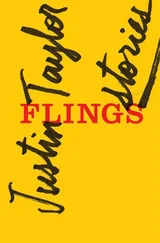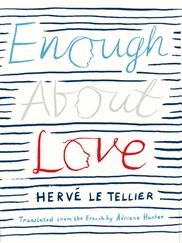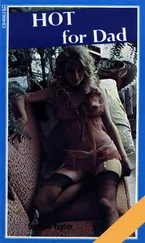“What? I just get here and you’re leaving? Your Lena again … This is obsession or I don’t know what I’m talking about.”
“Exactly, you don’t know what you’re talking about.”
I smiled at my own retort, because I’m so often several beats behind. To leave things on that victorious note, I said goodbye to Antonio and left immediately.
I walked along Dom Pedro Avenue, a small street leading down to the port, and stopped to look at the window display of a curiosity shop, intrigued by a Dogon statue, or it could have been Tellem. It was likely to be fake but had an interesting patina. I went straight in.
The only valuable object I had in Paris was an Inuit mask hanging on the wall in the living room. It was large, made of driftwood with feathers stuck into it. It most probably represents a seal or even a seal-man with its red teeth and dilated nostrils. It would have been a ceremonial mask worn by a shaman to ask the spirits to ensure that the caribou, which headed south in winter, would return the following summer. Its first buyer was the Reverend Samuel Wallis. He drew it in his diary for 1897, which can still be consulted in the library at the University of Victoria (British Columbia). Next to the sketch, Samuel Wallis has written the date — February 17—and that he bought the mask for a dollar from a trapper who was asking five. The mask had been found at about Christmastime, to the north of the Kuskokwim River, in an Inuit cemetery, next to a man’s corpse that the foxes had unearthed and half eaten. Wallis wrote that the trapper had put the body back in its grave under a pile of stones and secured the mask to his sled with the beaver pelts, then urged his dogs on through the dusk of unbroken night over the frozen waters of the Kuskokwim, to sell his furs in Mamterillermiut. The name means “the people of the smokehouse,” because they smoke fish there. It was just a village with about a hundred inhabitants, at the mouth of the river, a few dozen miles from the Bering Sea: mostly Inuits, but a few white men too, gold diggers, traders, missionaries from the Moravian church, including the Reverend Samuel Wallis. A few years later Mamterillermiut would move to the western bank and be renamed Bethel; in 1905 a branch of the U.S. Post Office would open there.
When I looked at that Inuit mask I often thought of the Reverend Samuel Wallis, of the application with which he drew it in his diary. Outside, it had been dark for five months, blizzards whipped up icy snow, he could hear it beating against the walls and windows of the mission. He had seen plenty of other masks, fish masks, masks depicting beluga whale hunts, fox or bird masks. He must have stopped wondering about these sculpted wooden faces by this stage. It was now the masks that questioned him. They certainly wouldn’t have toppled his faith, but he saw too many of them not to be disturbed. The Reverend Samuel Wallis probably couldn’t quite explain these unsettling feelings. So many different peoples had shaped pieces of wood. Perhaps the question the Reverend Samuel Wallis asked himself was “Why am I so far from home and yet so close to myself?”
I wandered around the store. A tall fair-haired man was cleaning a fragment of stained glass in a frame. I asked him how much the Dogon statue was. It was far too cheap to be authentic, and therefore far too expensive for a fake. I dawdled a little longer, chatting to the salesman, an American who had recently moved to Lisbon, when, reflected in a mirror, I could see the sidewalk on the other side of the street, and Irene. If it hadn’t been for the too red dress, the brief dazzle of it in the sunlight, I wouldn’t have noticed her.
I freeze where I am, just to be sure. It’s definitely her, hiding behind a truck. Irene’s following me.
I leave the store and head toward Rossio, checking reflections in shopwindows for my tracker on my heels. It doesn’t occur to me to shake her off. As I pass the Café Brasileira, I decide to sit at a table on the terrace and pretend to be surprised when I see her. But at one of the tables is a young woman with brown hair cropped very short, wearing jeans and a white T-shirt; she looks up and gives me a hint of a smile. She brings her coffee to her mouth, the movement ethereal, fine as an italic letter. I catch a glimpse of a tattoo on the inside of her wrist, a tiny turquoise dolphin, small enough to be hidden by a 100-escudo coin, not unlike the dolphin etched onto my black notebooks. That is when, with no plan or idea in mind, I do something that amazes me.
I go over to her. Her lips are thin but they form an O of surprise when I sit in the wicker chair opposite her.
“Excuse me, please let me sit down, I won’t stay long.”
She’s startled, she tenses imperceptibly, looks at me irritably and shrugs. She reaches for her packet of cigarettes and I can tell she’s going to get up and leave.
“Please,” I say quickly, “I beg you, don’t get up. Don’t be frightened.”
“I’m not frightened.”
She hesitates for a moment, my eyes are beseeching, I’ve no idea what I look like right now.
“Promise me you’ll listen to me just for a minute. Please.”
She takes a cigarette and lights it. Her reaction was only hinted at, Irene can’t have grasped it. She might think the woman’s impatient gesture was because I’m late. The young woman looks at me, hesitant, amazed, no — better — intrigued. She has fine, charmingly irregular features, her nose perhaps not quite straight. I detect a note of amusement in her expression. Anyway, I can’t be that disturbing, dressed in the “sensible student” clothes I’ve never stopped wearing.
“I’ll explain. I don’t know where to start. I’m Vincent, Vincent Balmer. I’m French.”
“That’s obvious, you have a French accent.”
She shrugs, tilts her head to one side prettily.
Her eyebrows go up and form a tiny crease across her forehead. She pushes her brown hair off her face without a word. Eventually she smiles and shakes her head, pouting impatiently.
“I–I work here,” I stammer. “In Lisbon. The woman watching us at the moment is … is a girlfriend. An ex-girlfriend. She left me. She thinks — well, actually, I’m making her think — I have a girlfriend here. A partner, if you like. But I don’t know anyone in Lisbon, I mean, I don’t have a friend … a woman. And right now she’s following me because I said I was going to meet my girlfriend. I’m sorry, I do realize this is all quite muddled …”
She eyes me in silence, rather sternly.
“Yes, you do seem muddled.” Her voice has a slightly cracked, hoarse quality, but a singing lilt. “Is she still there, this woman?”
“I don’t know. She must be behind me, pretending to look in shopwindows.”
She stretches her neck to look over my shoulder.
“No, don’t look,” I almost shout.
“Listen, there are dozens of women looking in shopwindows. How do you expect me to believe your story? Do you often hit on girls with a fabrication like that?”
My expression is so pitiful that a crease of amusement hovers over her lips.
“Okay, let’s go with it. And why did you tell her you had someone?”
“Because she left me. To show her I was over it, I’d forgotten her, because I loved someone else. I don’t know, to keep up appearances in front of her. Or maybe to see if she was jealous.”
She stares at me intently.
“You are sure she was following you, aren’t you?”
“Absolutely, I swear it.”
“And what does this woman look like?”
“I don’t know. She’s short with curly brown hair.”
She can’t help smiling, there are lots of short women with curly brown hair. I have a flash of inspiration: “She’s wearing a dress, a really very red dress, with flouncy bits. And a necklace of orange, blue, and black beads. I gave her that necklace. And … I think she’s still holding a French newspaper.”
Читать дальше
